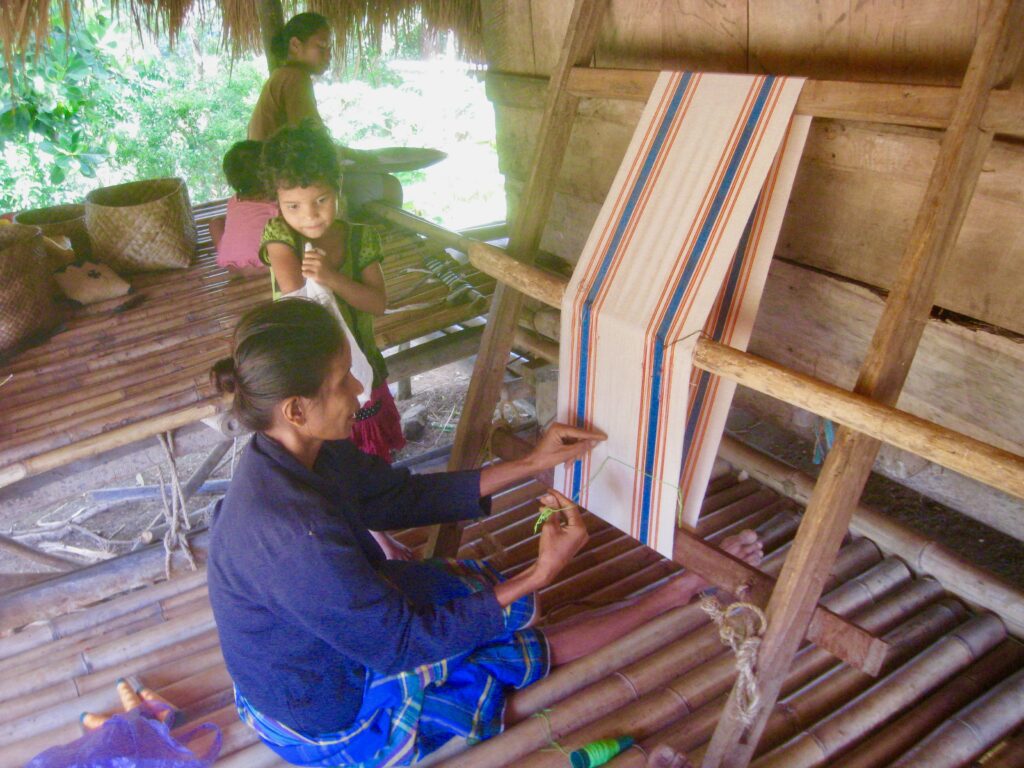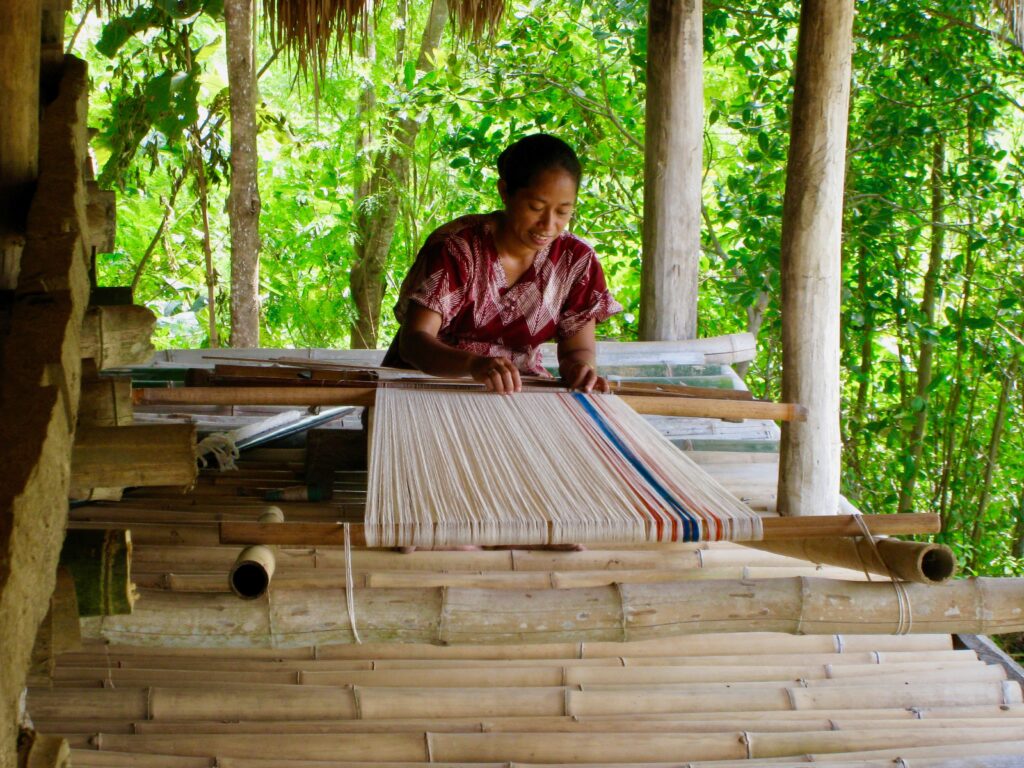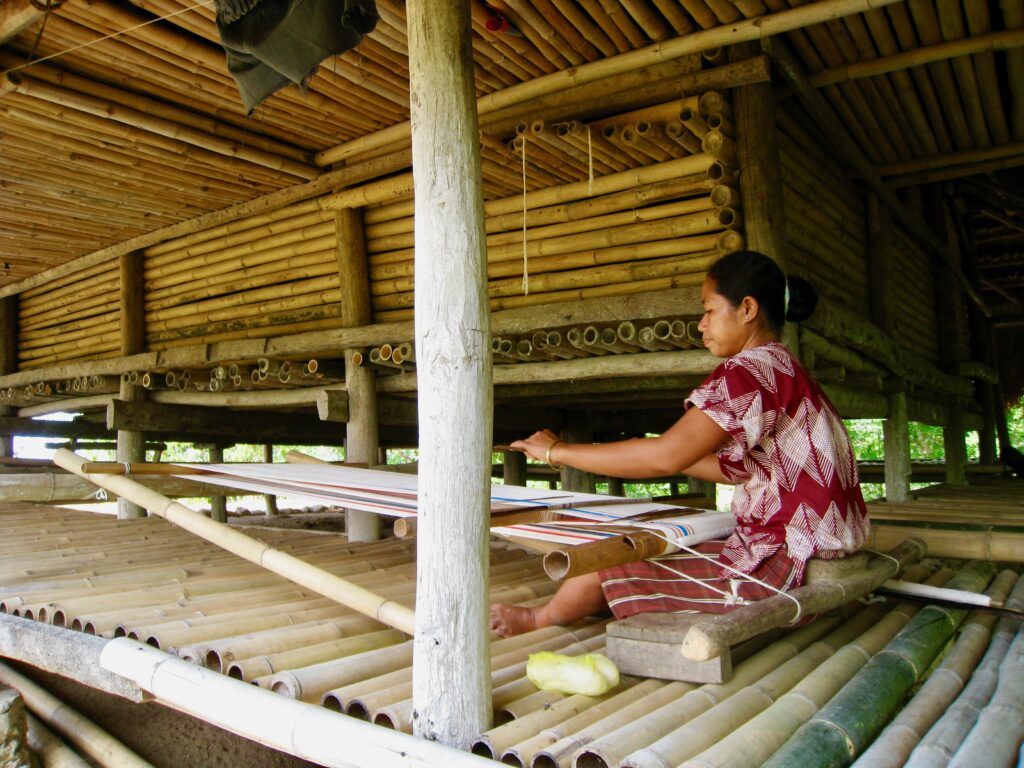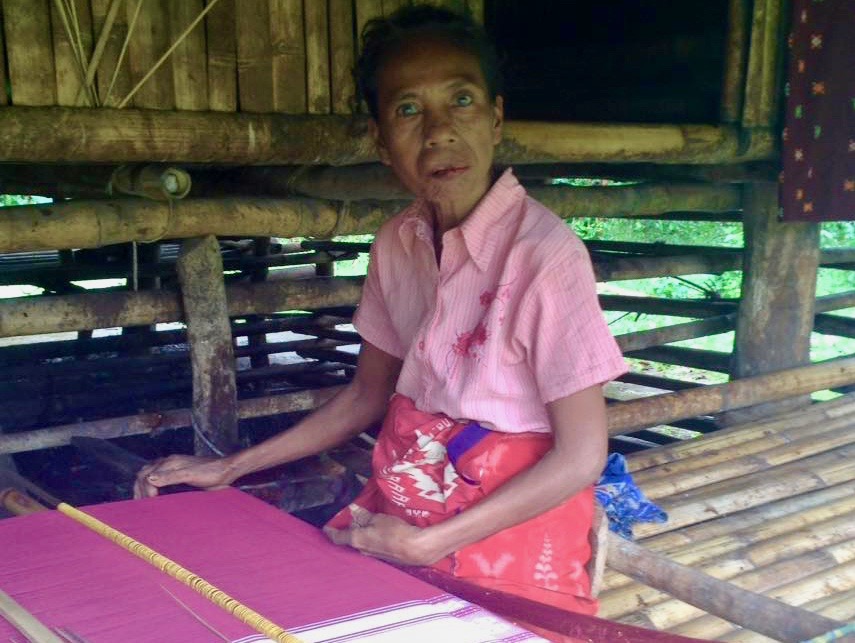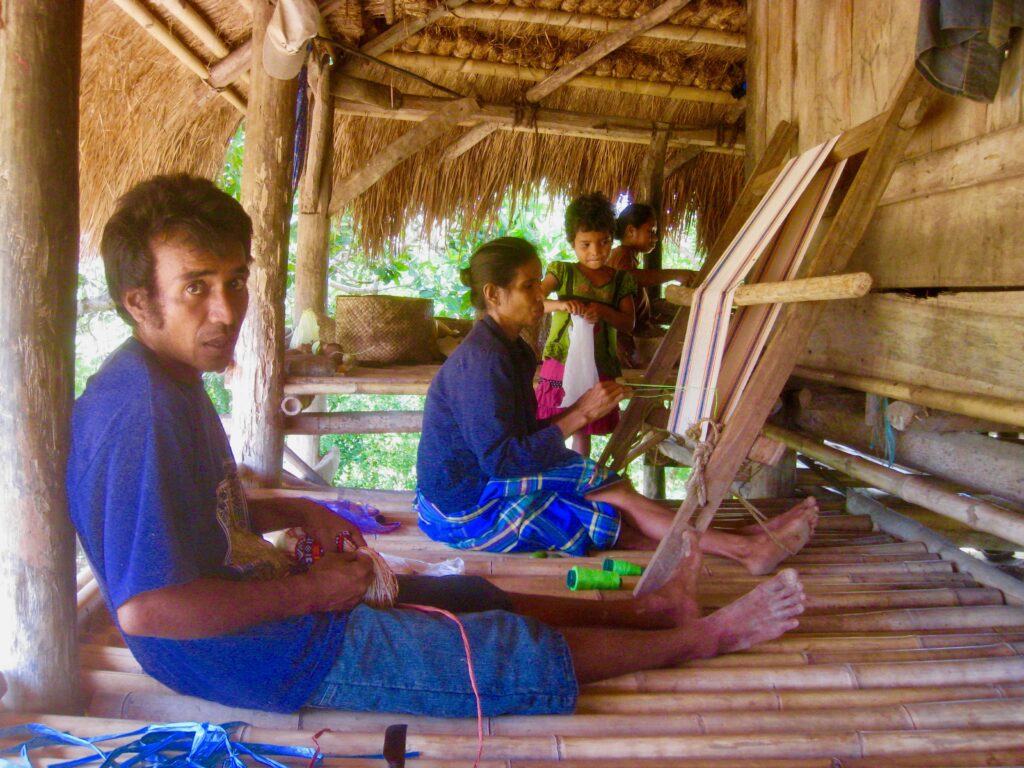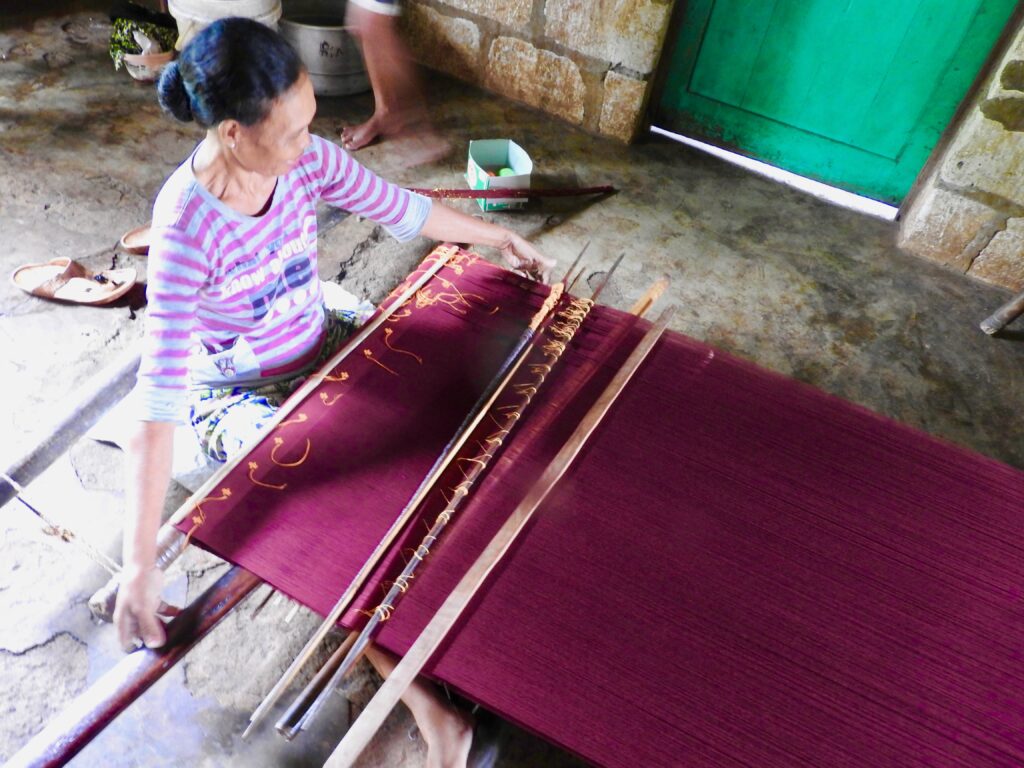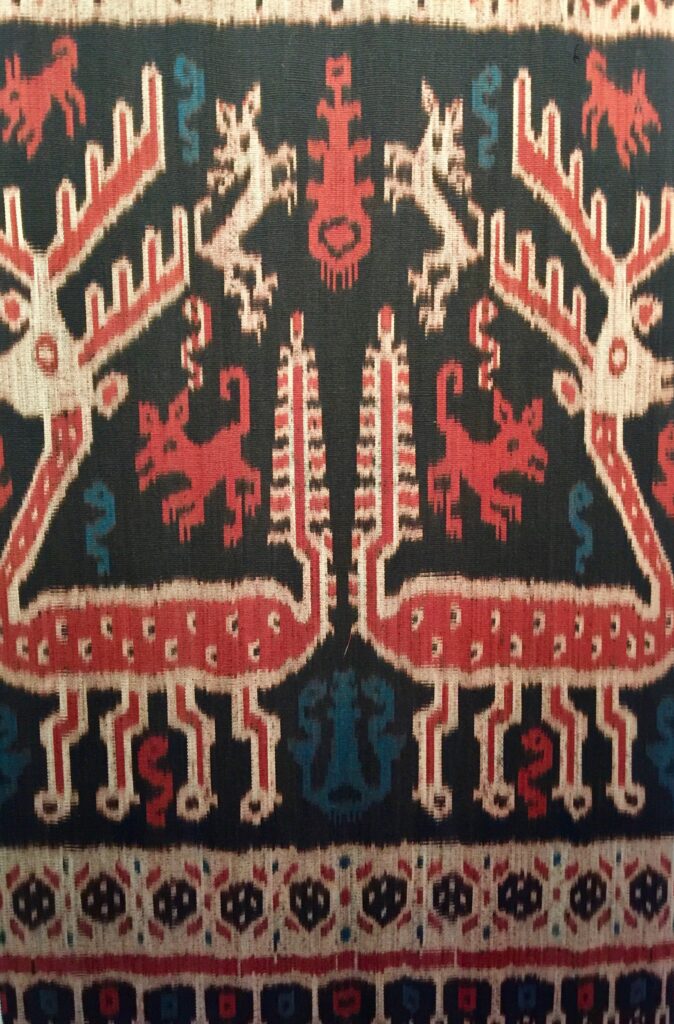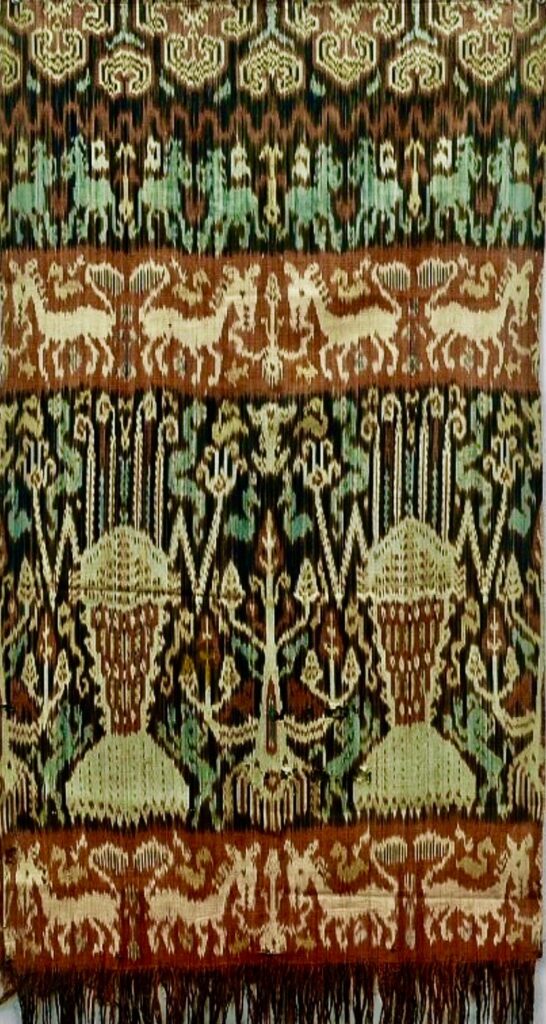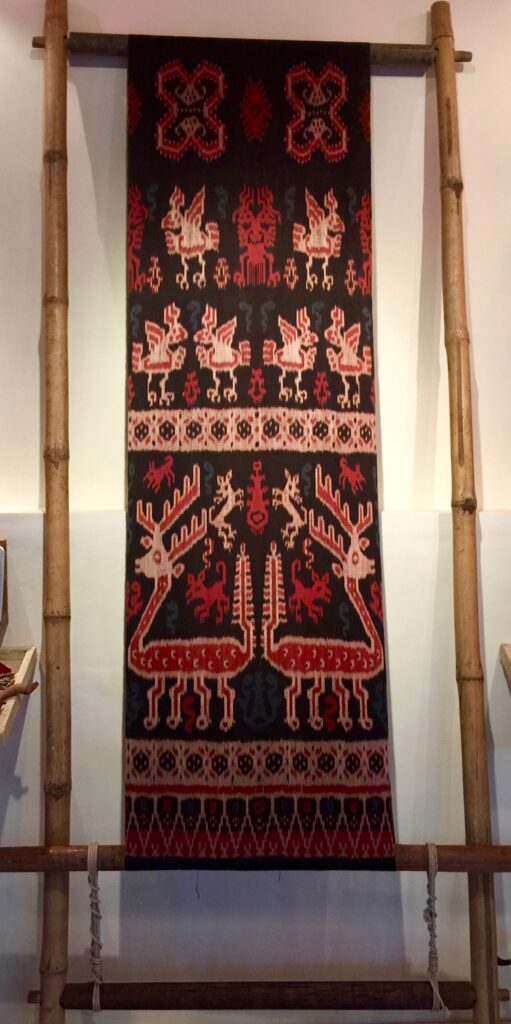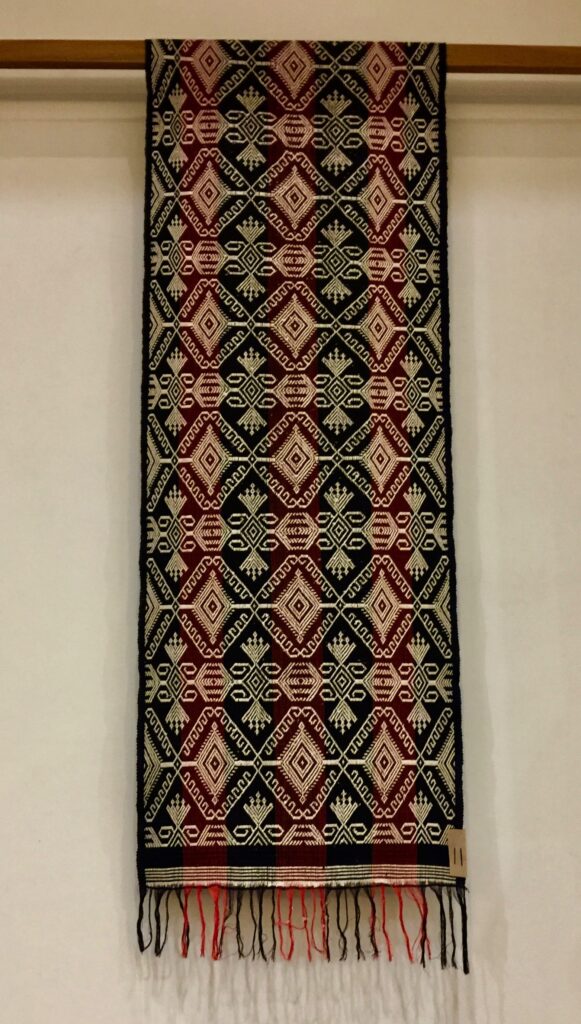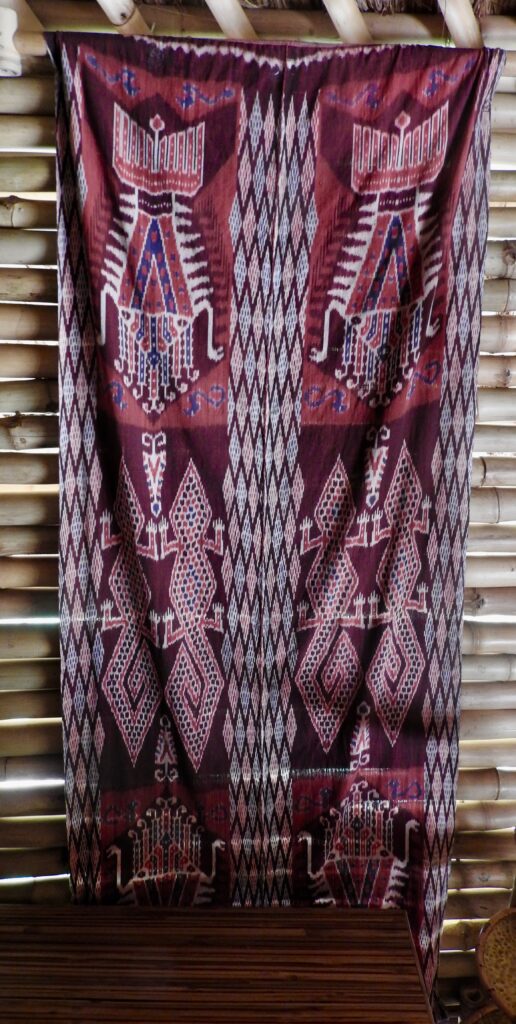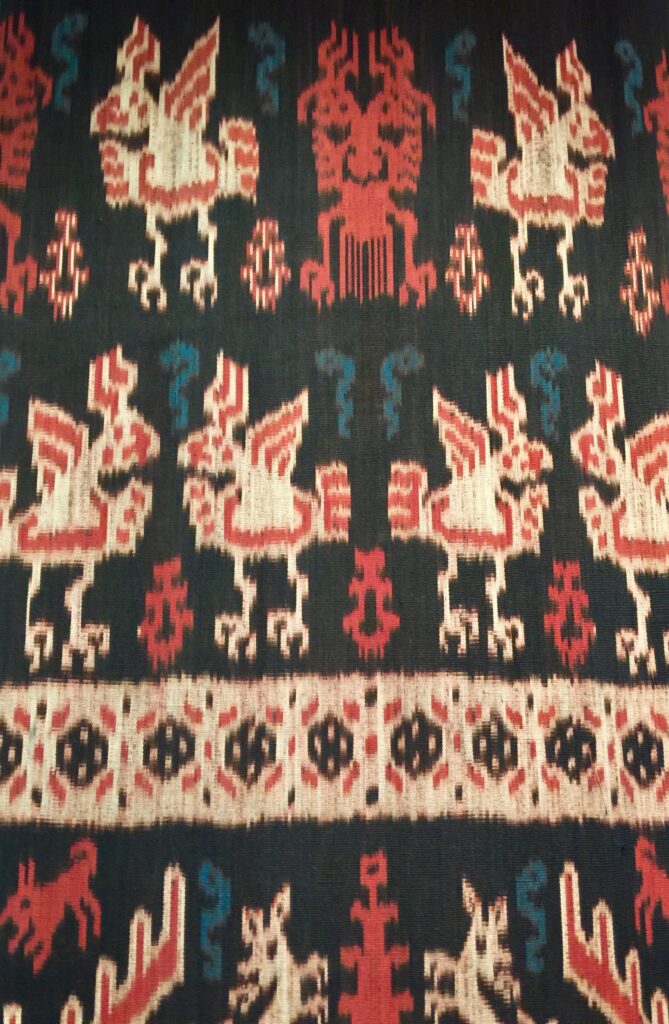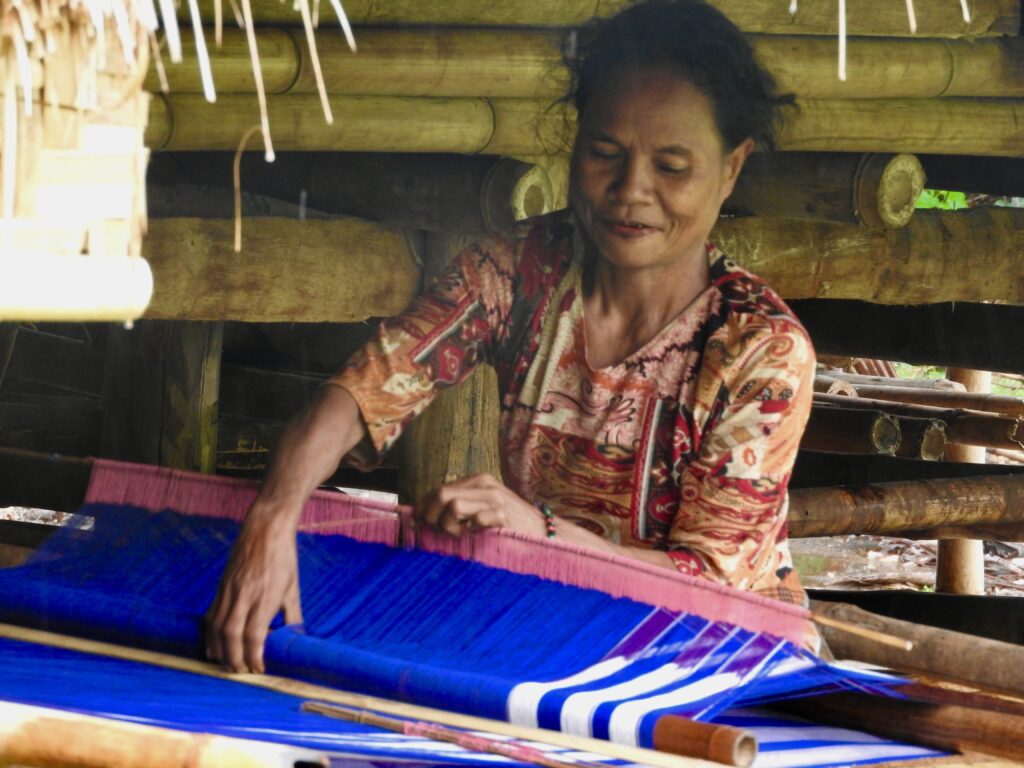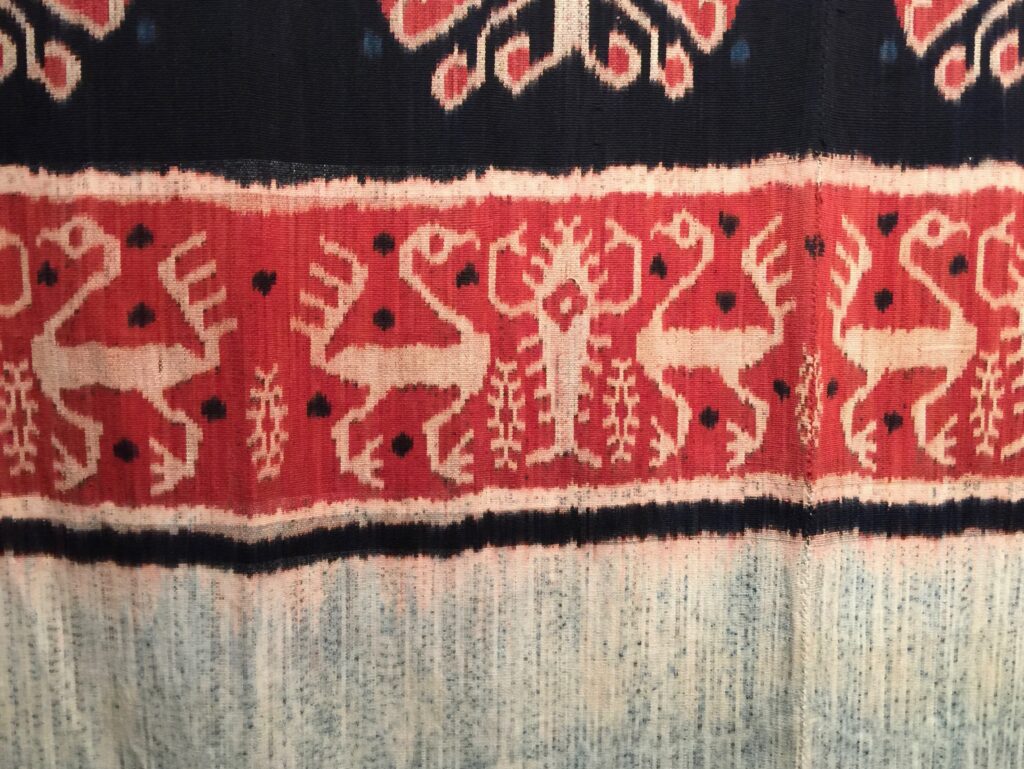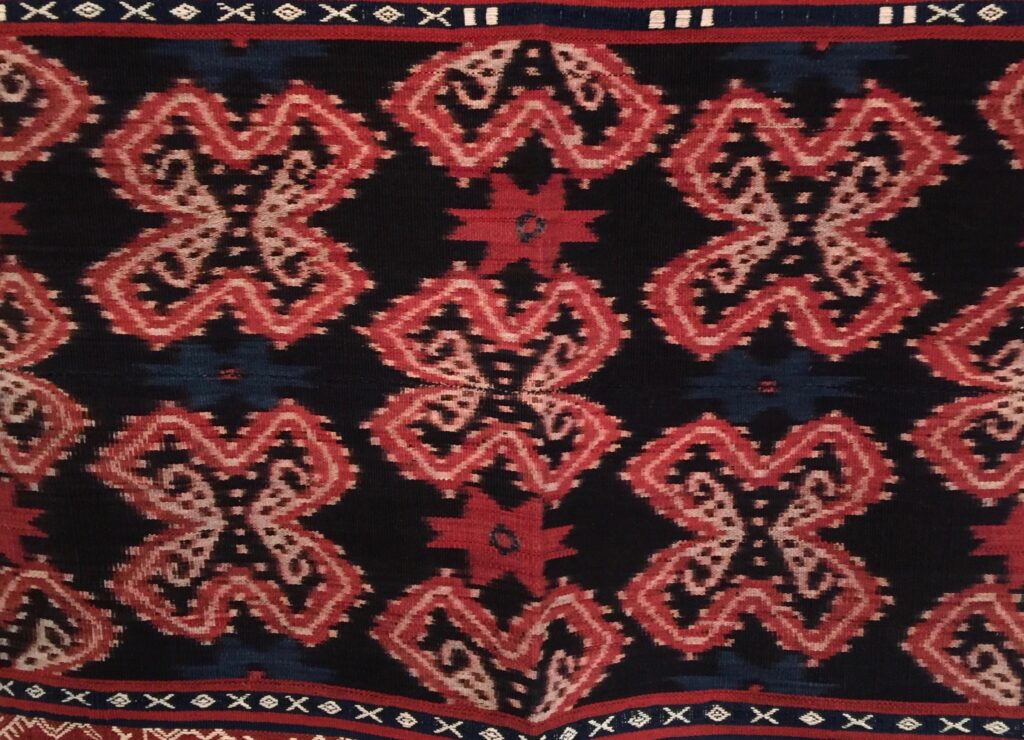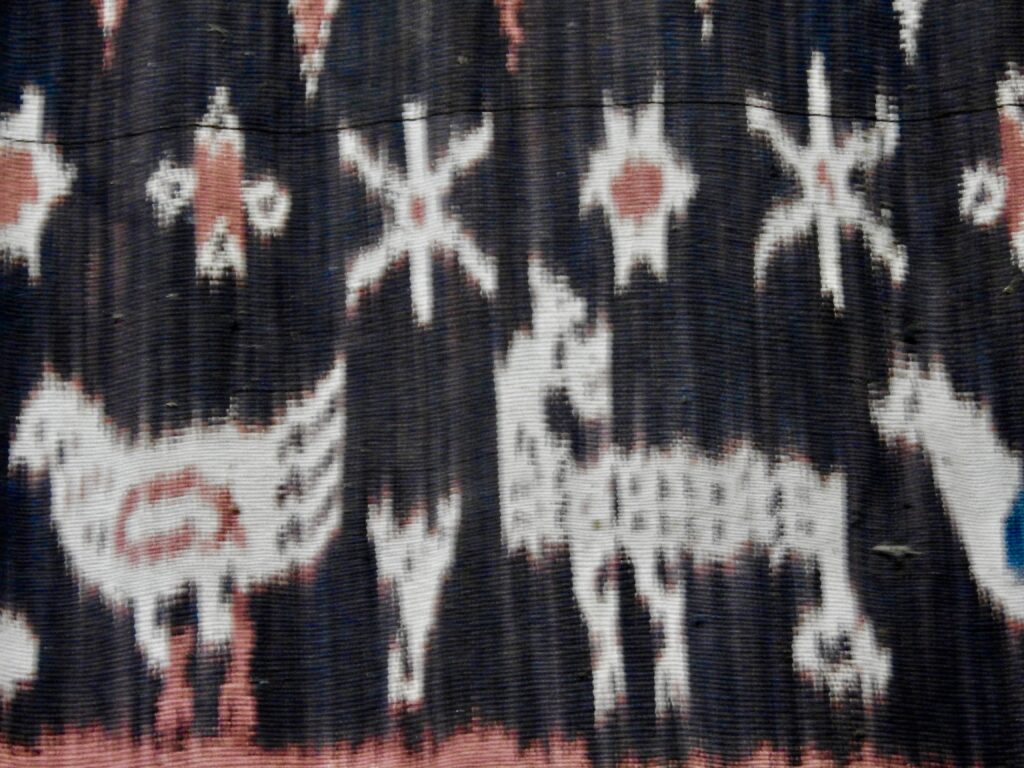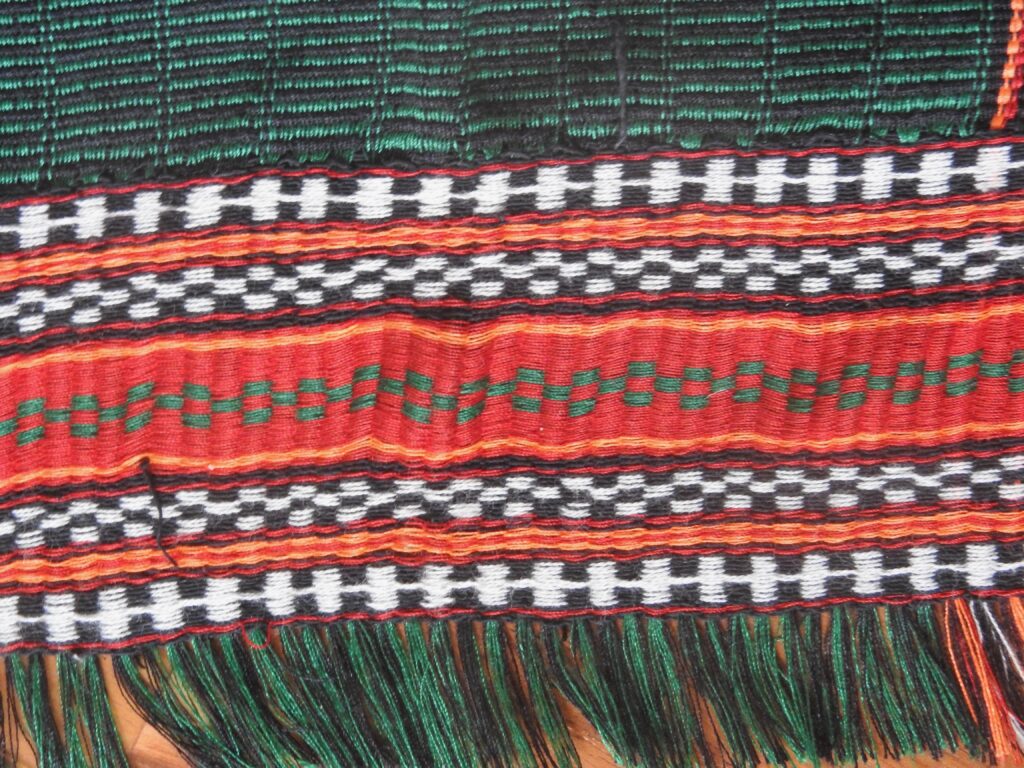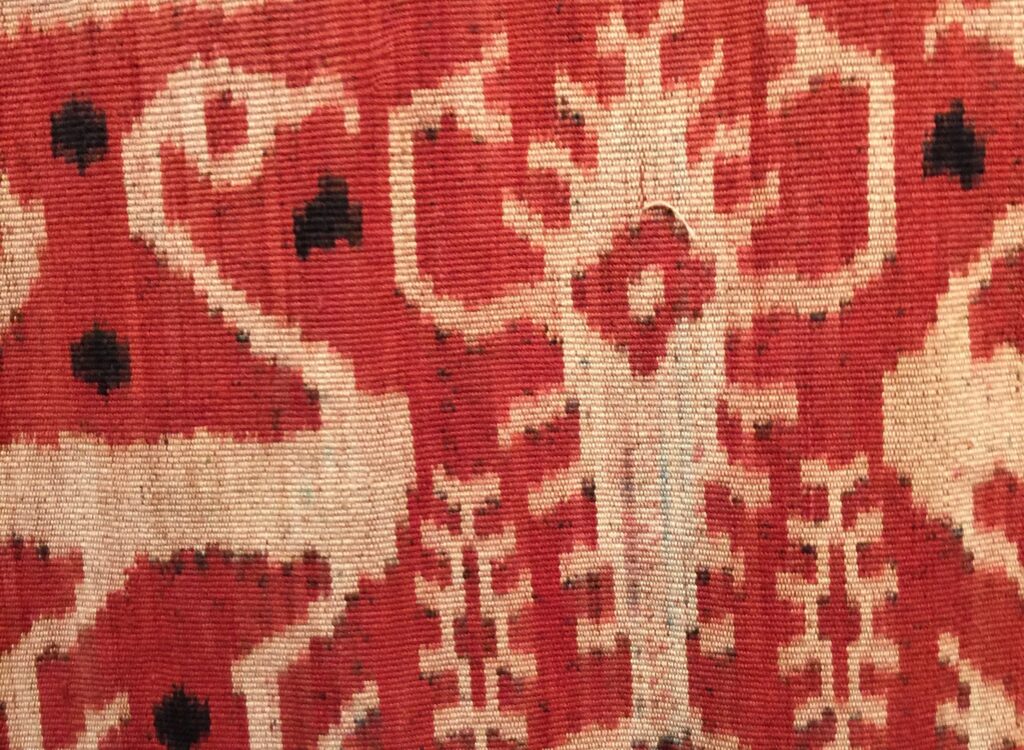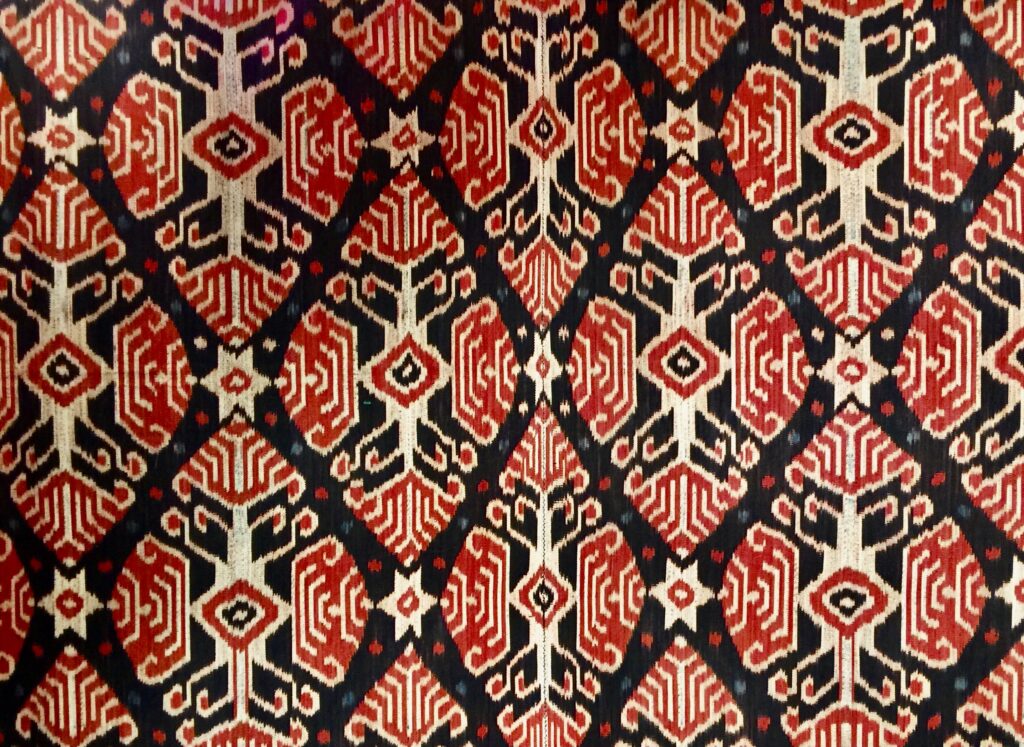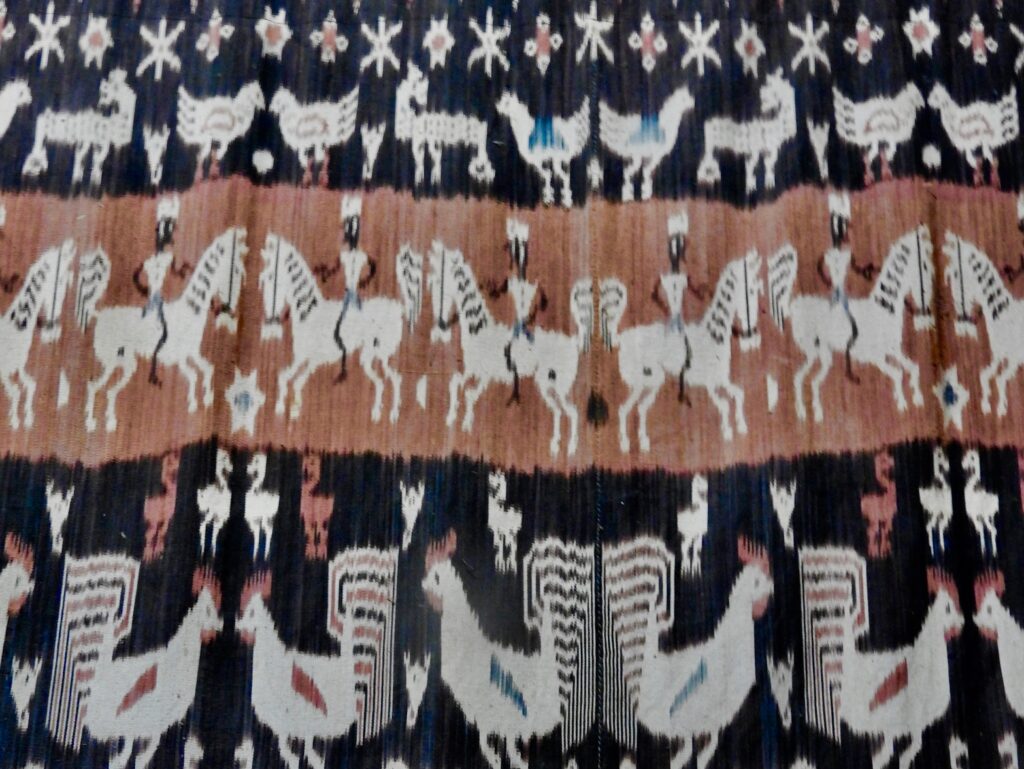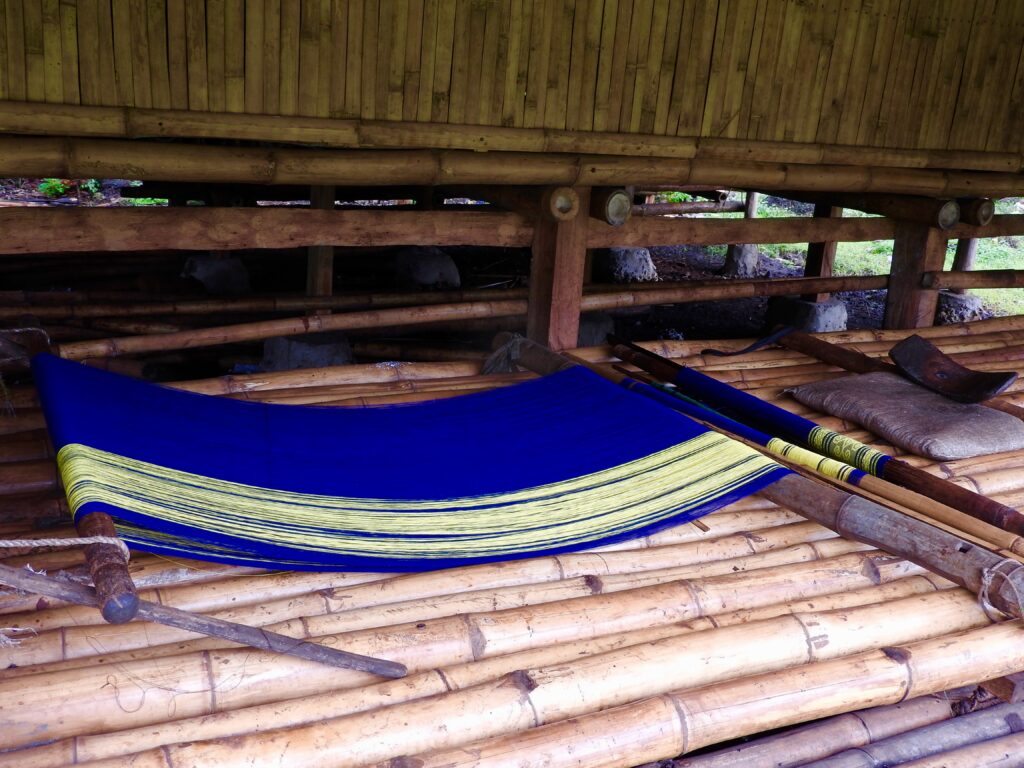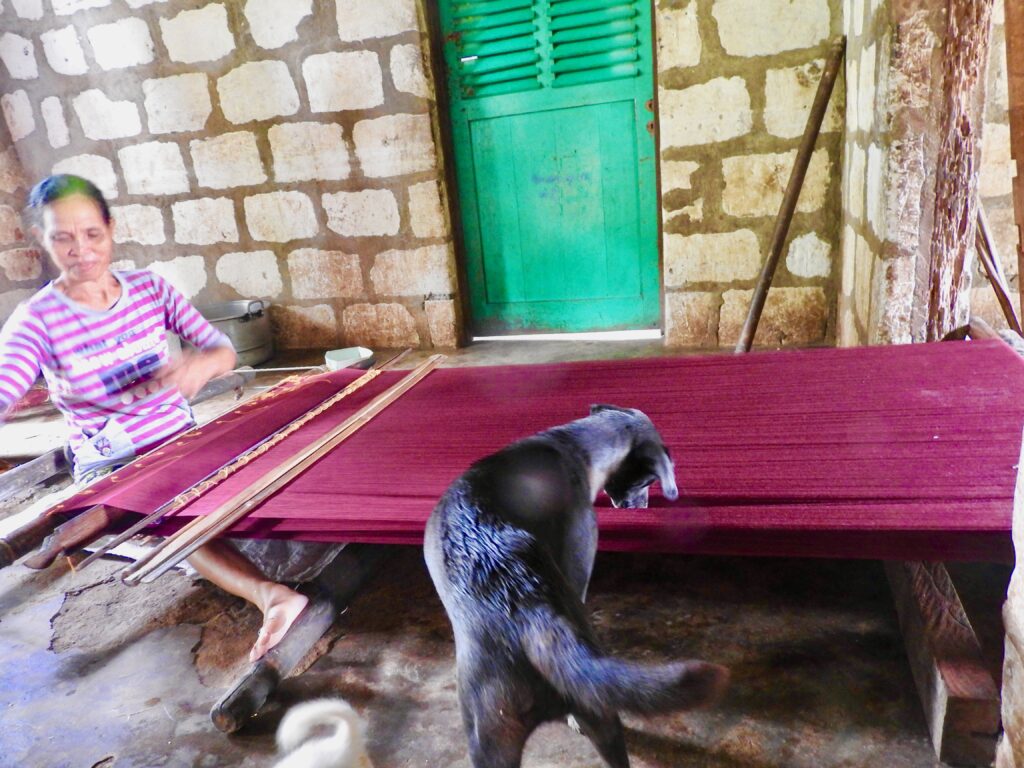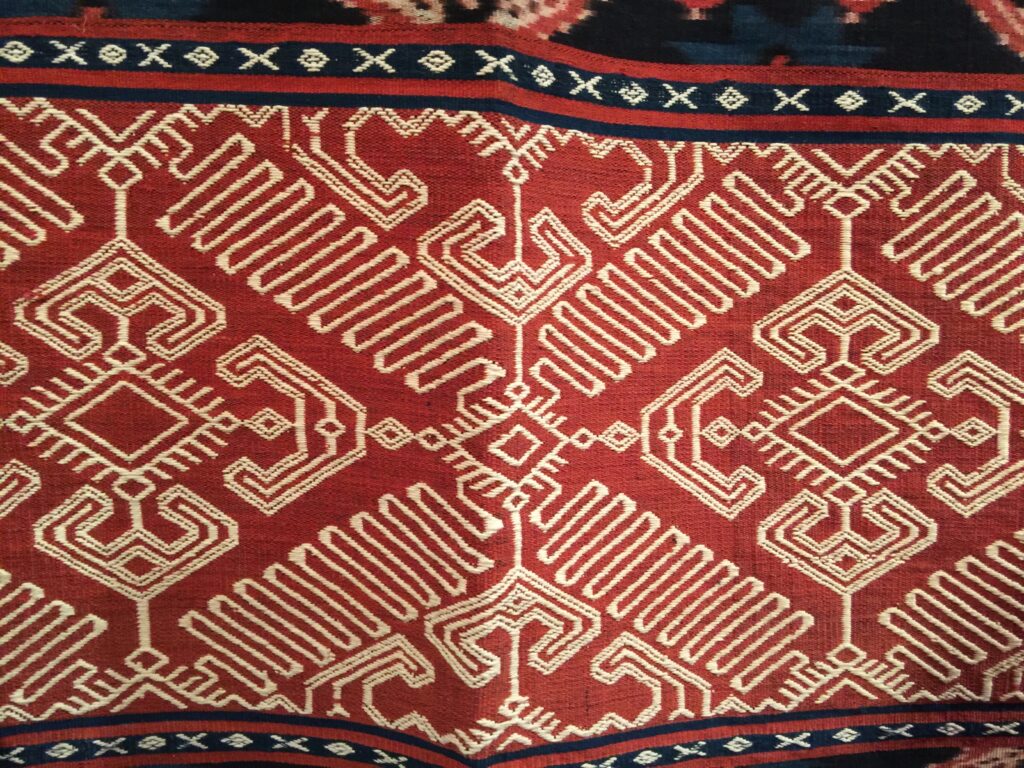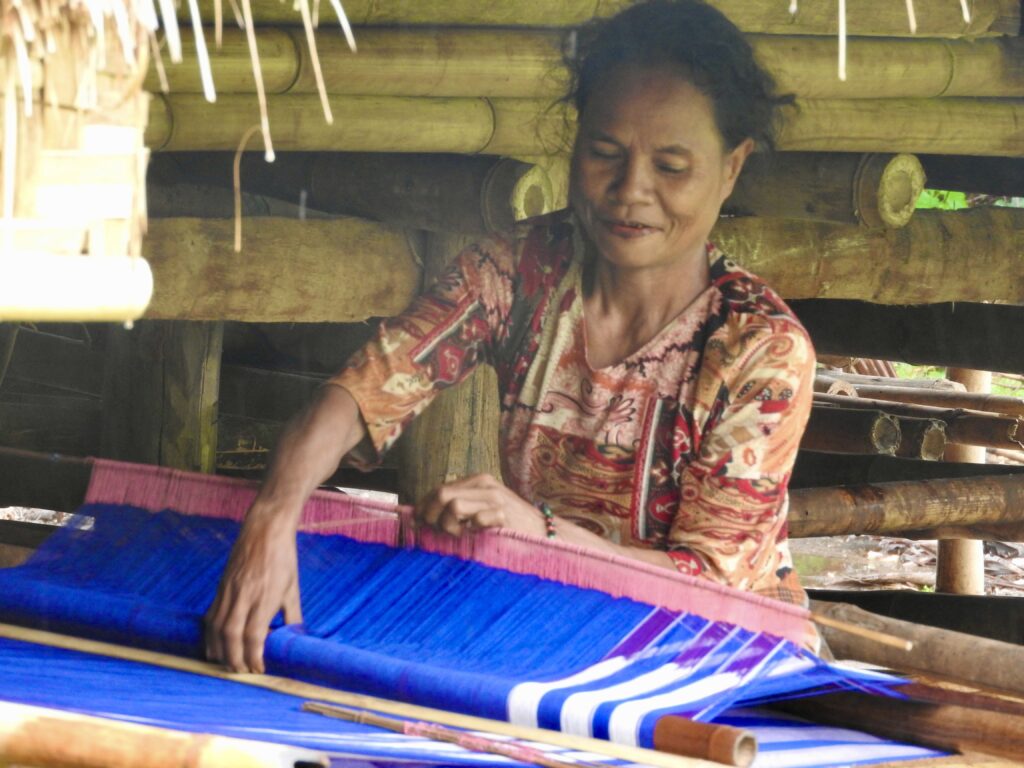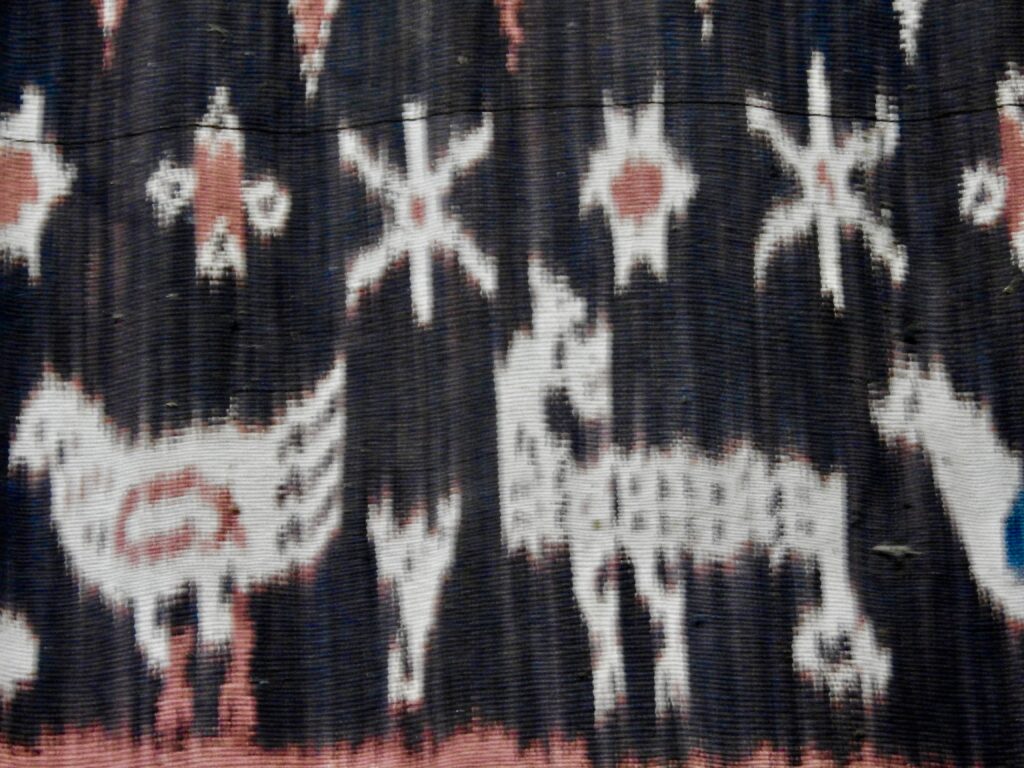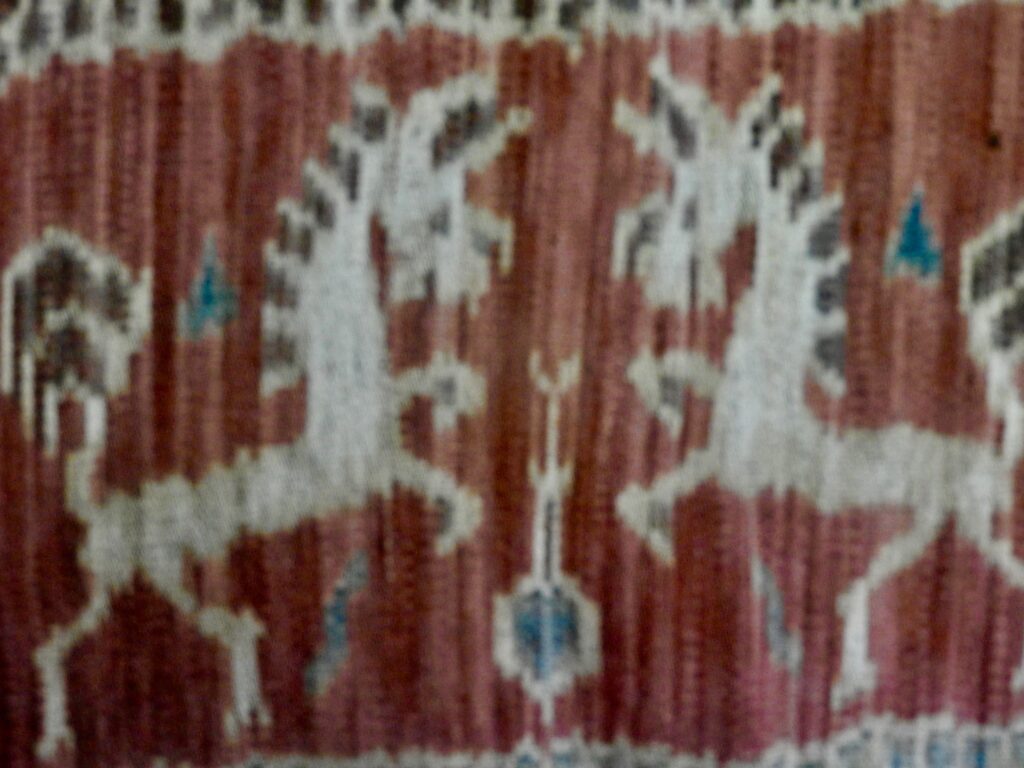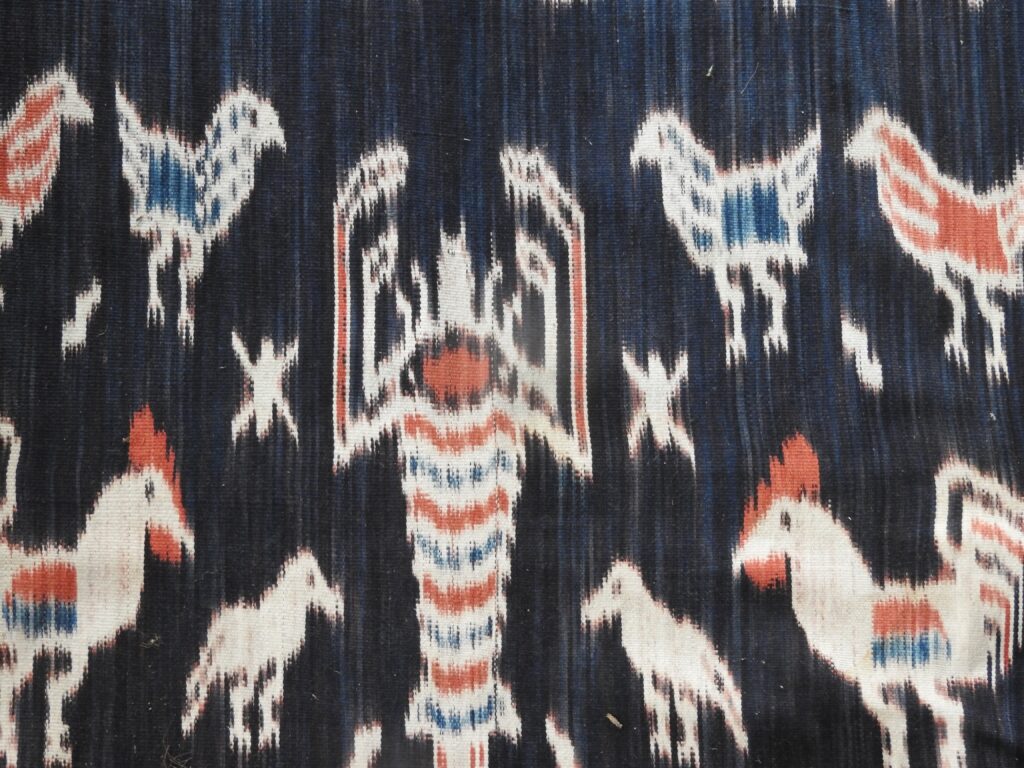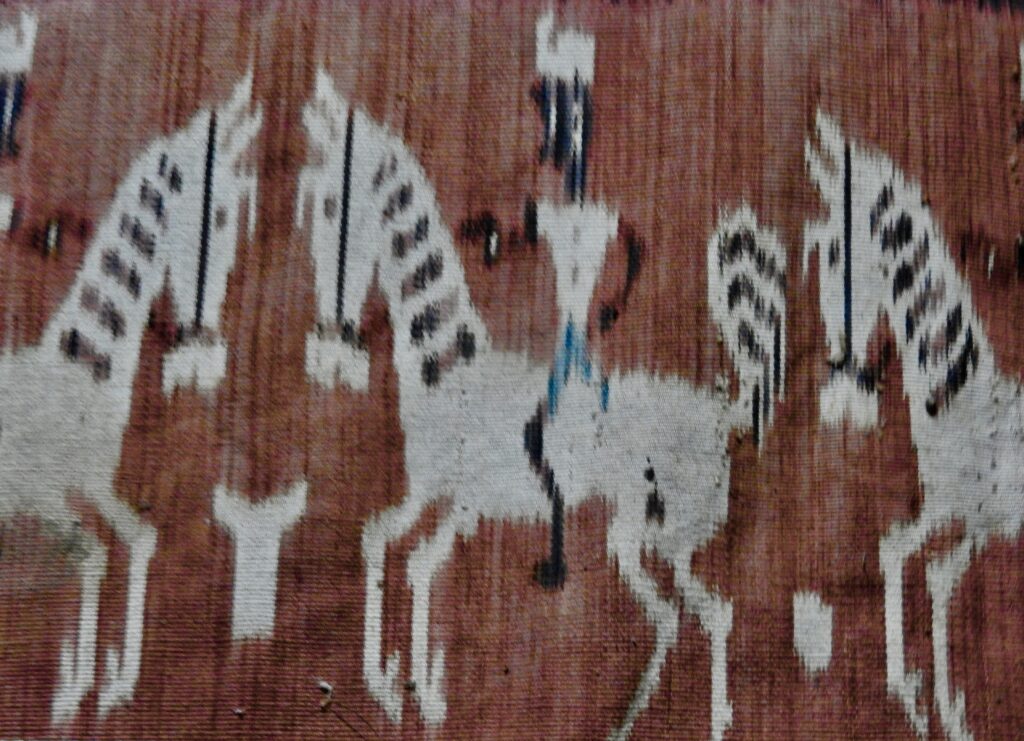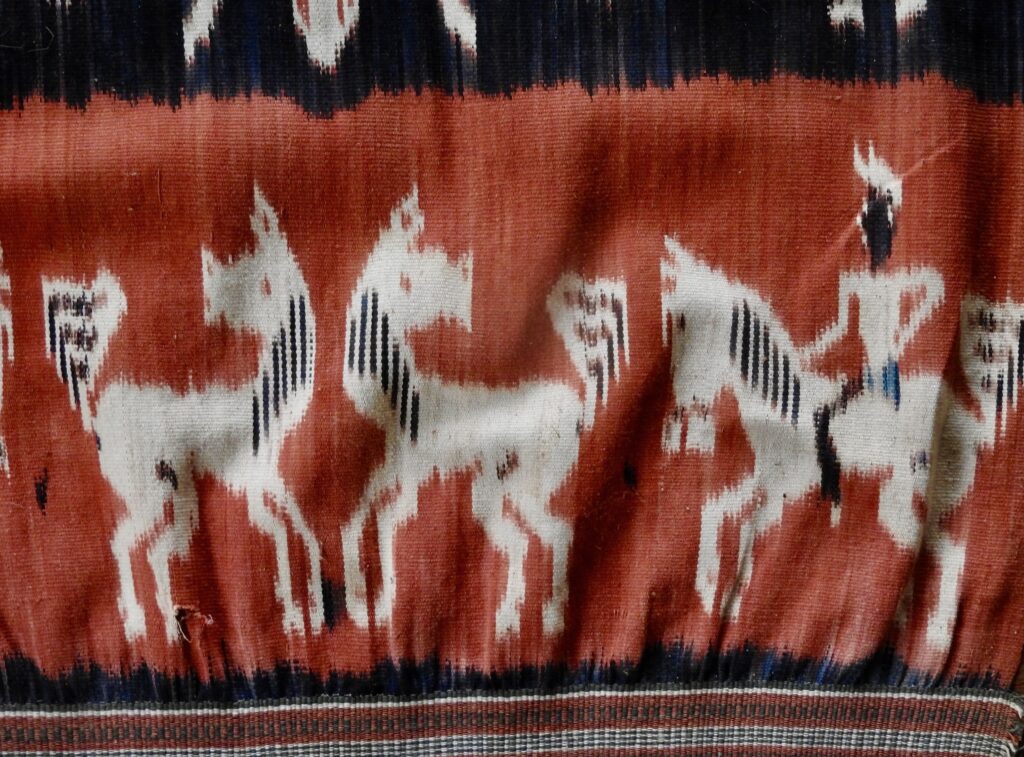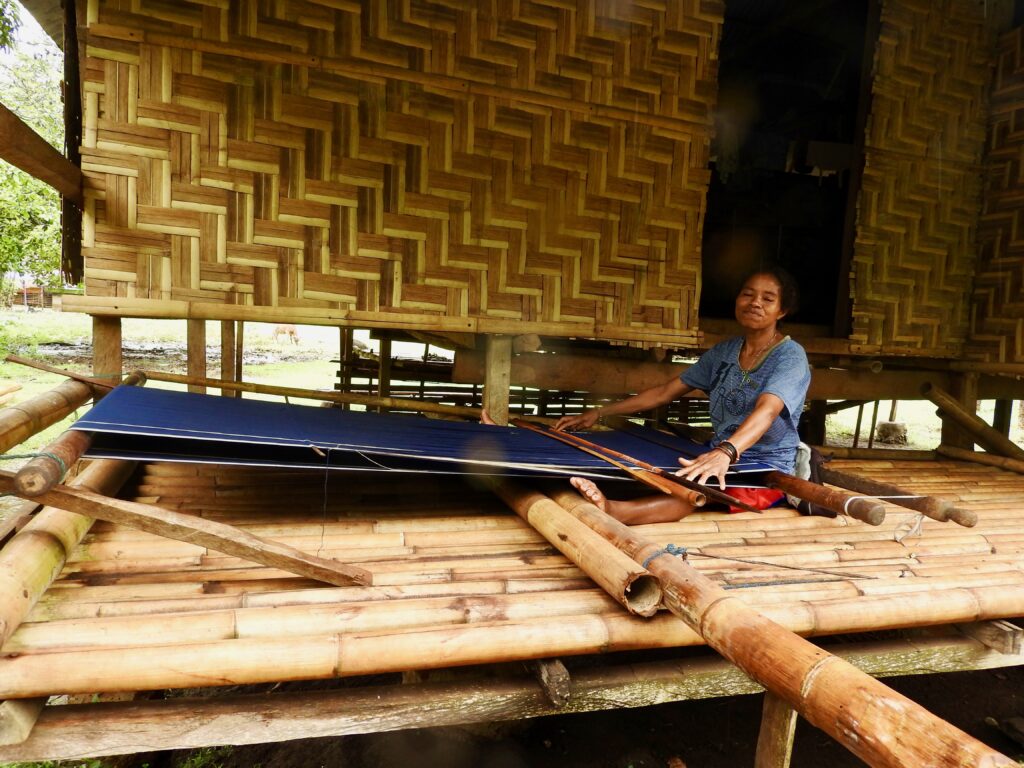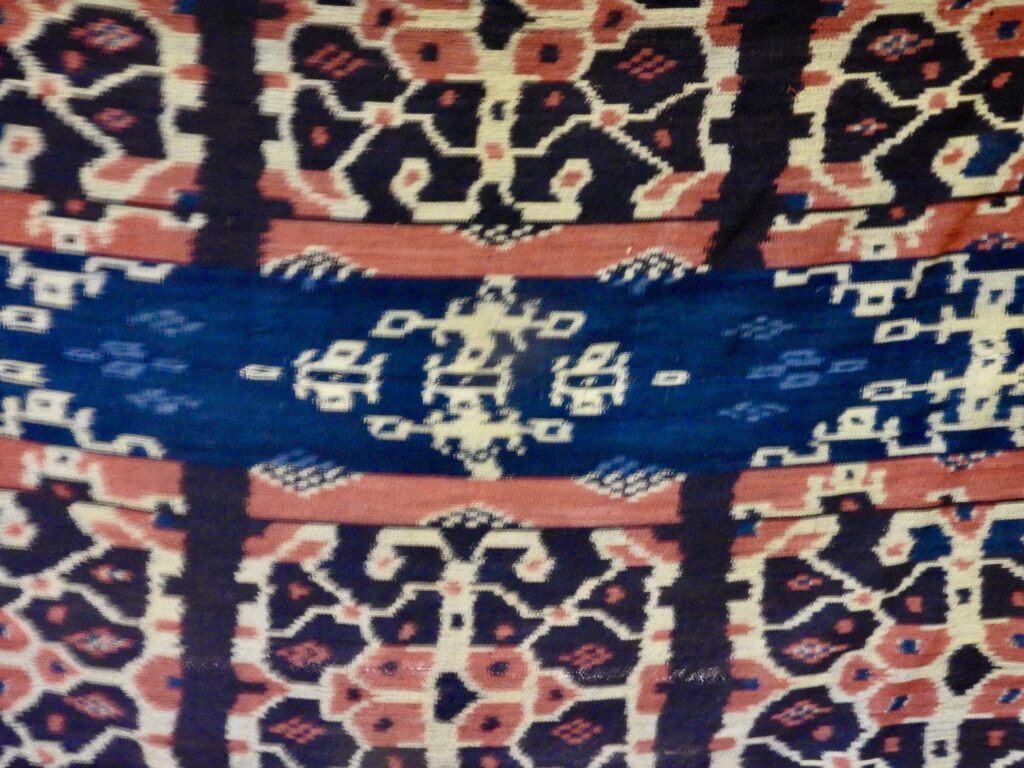Craftsmanship
SUMBA FABRICS
It represents the means through which the current generation passes its messages to future generations.
The artefacts are deeply personal and follow distinct systematic forms, but show the individuality of the weaver and the country from which they are produced.
Internationally, Sumba textiles are regarded as examples of the highest quality textile design and can be found in the world’s most important museums, as well as in the homes of collectors.
One hundred years ago the Dutch were already exporting fabrics from the island. Today the textiles are still produced by a relatively small number of women, mainly in the eastern coastal districts of the island. These fabrics are made not only for export, but also for trade with people from the interior of the island for ritual use where by custom the ikat process was prohibited.
THE MEANING AND SYMBOLISM OF FABRICS FABRICS IN SUMBA
Sumba fabrics are produced by the women of the island, they are intended as tangible representations of the feminine element of the two-tone universe. On Sumba this male-female complementarity is encapsulated in the notion of the highest Being who is the Father Sun-Moon Mother and the Creator Weaver of human life.
The Sumbanese believe that a person is able to acquire the special powers and qualities of certain creatures when fabrics displaying such patterns are worn.
Although different fabrics represent appropriate clothing for men and women, the fabrics are collectively seen as the feminine component of their cosmos.The fabric is a symbol of the woman’s family.
In ritual exchanges textiles are an important part of mutual gifts, for male objects such as metal, buffalo and ivory from the man’s family, whose gift is more important due to the inferior status of the wife.
Sumba Textiles are both clothing and traditional ceremonial currency: many fine fabrics must be presented at every wedding as part of a counter-payment.
The cloth is also donated to demonstrate that the contract is binding (“you sign your name when you accept the cloth”), as a sort of “interest payment” to ask for more time to discharge a debt, and as a gesture of thanks for a kindness extended long ago and never reciprocated. Cloth in this sense is counted; its value is estimated based on its materials, workmanship, design, and its relative value compared to the livestock exchanged for it.
In ritual exchanges textiles are an important part of mutual gifts, for male objects such as metal, buffalo and ivory from the man’s family, whose gift is more important due to the wife’s inferior status.
Sumba Textiles are both clothing and traditional ceremonial currency: many fine fabrics must be presented at every wedding as part of a counter-payment for a wealth, the bride pays in horses, buffaloes, and gold, and at every funeral as a sign of mourning.
The cloth is also donated to demonstrate that the contract is binding (“you sign your name when you accept the cloth”), as a sort of “interest payment” to ask for more time to discharge a debt, and as a gesture of thanks for a kindness extended long ago and never reciprocated. Cloth in this sense is counted; its value is estimated based on its materials, workmanship, design, and its relative value compared to the livestock exchanged for it.
IKAT INDONESIAN TERM WHICH MEANS TO KNOT
Precious cotton fabric from Nusa Tenggara and particularly from Sumba (Indonesia) with traditional designs. The ancient ikat technique for the decoration of fabrics (which have the same name and which are intended for particular cultural ceremonies) consists in fixing decorative designs through complex dyeing operations on the yarn to be weaved.
The yarn is arranged in various bundles, some parts of which are they cover with fiber in order to make them immune to color during the dyeing process; This results in a yarn that is only partially coloured, which once woven reveals a lively decorative design. While the ikat of Flores are characterized by abstract or geometric images, those of Sumba have animal figures (once only deer, buffalo, chickens, snakes, crocodiles, turtles, lizards, then with foreign influences, also Dutch lions and Chinese dragons ), but until the beginning of the 20th century they had to celebrate the epic of an aristocratic family, so warriors on horseback or severed heads of enemies were also depicted.
Production techniques have changed somewhat in the last eighty years. Today, in fact, industrially produced colors are used whereas once only mineral and vegetal elements were used for colours, for example kombu (rust red) was obtained from the bark and roots of kombu, a very widespread tree in south-east Sumba. Ikat is a process for dyeing yarn, widespread today especially among the Malaysian and Indonesian people. The meaning of the term is cloud. Ikat is technically a reserve dyeing, that is, a type of dyeing where parts of the yarns are protected by a tight binding so as not to be dyed, while the unbound parts are coloured.
There is a simple ikat, in which the dye is applied to the warp threads, joined in small bundles tied in such a way as to obtain, during weaving on the loom, the pre-established design, and a double ikat, in which they are also treated with a similar procedure. the threads of the plot.
Ikat was already known to ancient Hindu culture, and in its simplest type also to pre-Columbian Peru technique.
Ikat fabrics are easily distinguished from printed imitations by the typical interpenetration and fusion of colors at the starting and ending points of the designs.
The creation of the fabrics chinè a la branche of European production was very similar.
CURIOSITY – Until less than a century ago it was the privilege of noble families to make and wear ikat clothes and anyone who violated the rule could even be punished by death. Then came the Dutch, who at first broke that special monopoly (many officials and merchants bought ikat) and later encouraged its production, because the fabric had an excellent market in Java
Unfortunately, the increase in production also led to an impoverishment of quality and already in 1920 there were not many ikat made with the usual techniques and traditional designs. It is said that once the blood of the dying was particularly appreciated for coloring. The work of ikat is traditionally an entirely female occupation, in fact it is the women who plant the cotton, collect it, work it and spin it, those who produce the dyes (where traditional methods are still used), prepare the decorations and proceed to weaving. An ikat was the result of very long and complex work. The spinning took place between July and October, the warp and designs were prepared between September and December, then at the end of the rainy season, usually in April, the key colors (blue and kombu) were prepared, then in August the production began. weaving. So it took more than a year to make an ikat. The cotton thread is strengthened
hardening baths of grated cassava (a plant also called yuca, better known as cassava, which has a tuber root). Some examples are exhibited in the museums of Rotterdam and Basel.
LAU ARE THE TUBULAR SKIRTS WORN BY WOMEN
The same motifs that appear on a man’s hinggi, reappear on women’s skirts, but the range of techniques used are superior to ikat alone. It includes designs worked by additional warp weaving, embroidery, appliqués of beads and shells and occasionally tufted fabrics with additional yarns. These figures appear in light yarns on the plain background canvas of dark blue, red, brown or black.
Lau pahudu is the name of a skirt worked with extra warp.
Lau Hada is the name for the skirt worked with pearls and shells. They are also known as Mbola Pakiri which means “at the bottom of the basket” and refers to the way they are carried when purchased as part of wedding gifts. The images used within the textilesThe identifiable creatures that appear on actual Sumba textiles include cocks or chickens (ritual sacrifice animals), deer with their antlers spread. Shrimps and lobsters symbolize rebirth-shrimps because they shed and replace their shells, lobsters because they can regenerate their limbs in a process of renewal are symbolic of the powers of a ruler.
HINGGA
Hingga are large blankets decorated with Ikat warp used for adat trades and as a man’s clothing. They are usually made in pairs, one fabric is wrapped around the hips and the other thrown over the shoulder. When intended for the nobility the cloths are usually larger and are dyed red and indigo.
The color and pattern combine to indicate the status of the wearer and the giver. In the past, only the nobility had the right to use and wear such cloth. They were only seen at large festivals, where they were worn by nobles, their family and retainers as a sign of their power and wealth, which was concomitant with the wealth of the total society.
The subjects of the drawings refer to local objects such as horses, roosters, snakes, deer, fish and crayfish. Other specifically Sumbanese images include the tree skull and the mamuli, a gold ornament that is also an indicator of rank.
In addition to these, foreign symbols such as dragons taken from Chinese ceramics and the rampant lions of the Dutch coat of arms are sometimes incorporated.
